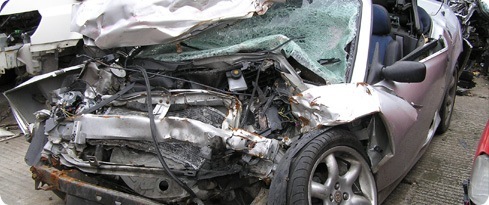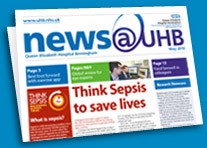Your views

Your feedback is vital to us as we continue to increase the quality of our services.
You are here:
Date: 7 March 2025
Time: 02:32

Patient's crash triggers trauma app creation
Story posted/last updated: 31 March 2016
It’s not unusual for patients to want to ‘give something back’ to the NHS after undergoing life-saving treatment – but very few go to the lengths of Duncan Buckley.
Six years after being airlifted to the former Selly Oak Hospital following a horrific car crash, Duncan now not only works for the health service but has also come up with his own idea to possibly help improve patient experience after a major trauma.
The 38-year-old former IT worker, of Swynnerton, Staffordshire, was in an induced coma for six weeks and spent four months at Selly Oak and Queen Elizabeth Hospital Birmingham and then seven months at the University Hospital of North Midlands after his MG sports car collided head-on with a van in April 2010.
He suffered multiple life-threatening injuries, including a fractured skull, shattered knee and broken sternum, and has undergone 25 operations on the long road to recovery.
As soon as he was well enough Duncan, and his wife Lisa-Marie, became actively involved with patient and public involvement (PPI) groups run by the QEHB-based NIHR Surgical Reconstruction and Microbiology Research Centre and the hospital’s Critical Care department – giving him the chance to have some direct input into trauma research and patient care.
“For me it was all about improving things, as a result of what I had gone through, for those that came along afterwards,” he said.
“After my accident we got in touch with the emergency responder who came to the scene and he said that there had subsequently been three similar collisions on the same stretch of road and all of the drivers in those accidents had died.
“That motivated me to want to feed my experiences back into the system, to say what was good and what wasn’t, what could be improved so that, perhaps in the future, the outcomes of those people might have been different.
“I had five years’ worth of experiences from treatment and rehabilitation and I thought I may as well put that to good use. For me it was a great reason to actively try to get into the NHS and help to drive better outcomes for patients enduring similar circumstances.”
With his determined attitude and help and advice from the NHS contacts he had cultivated as a PPI participant Duncan got a job as a clinical effectiveness audit team leader at Macclesfield District General Hospital in May 2015.
“That gave me a route into the NHS but, for me, it was too far removed from the patient involvement,” Duncan explained. “I really wanted to get involved in the research side of things, that’s where my interest was. Having been a patient I wanted to see the direct effect that research can have on outcomes.”
The chance to do just that arose six months later with a portfolio facilitator’s role at the Clinical Research Network West Midlands (CRN WM), helping to recruit participants for clinical trials.
One of the most difficult times during Duncan’s rehabilitation was being immobile and unable to speak in the early months because of the tracheotomy he had undergone, which made communication with his wife, Lisa-Marie, relatives, visitors, nurses and doctors incredibly challenging.
He has used that experience and his IT skills to develop an app-based tool that could be used with tablet computers to help similarly incapacitated patients communicate with their loved ones and medical staff.
“It was so frustrating not being able to communicate as a patient, to tell staff, or relatives, that you were in pain, for instance,” he said.
Duncan is now working with clinicians and scientists at QEHB and the University of Birmingham, with the aim of trialling the technology with patients at the hospital.

Duncan’s trauma
Duncan’s life changed forever as he drove home from his job as an IT tutor in Dudley on 12 April 2010. His MG TF sports car collided head on with a van on the B4379 outside Heath Hill, Shifnal, Shropshire.
Duncan suffered multiple life threatening injuries including a fractured skull, hairline fracture of the spine, fractured sternum, broken ribs, collapsed lungs, broken collarbone, smashed left elbow and knee, fractured right tibula and fibula and a broken ankle.
He was given just a five per cent chance of survival.
“The last thing I can remember from that day is dinner-time,” he said. “It was a head-on smash and the back end of my car flipped up towards the van’s windscreen.
“There was a high chance of brain damage because of my head smacking the dashboard and I nearly died three times in hospital.
“It had a devastating effect on my life, and especially my wife’s. Physically, I will never be 100 per cent again and am probably about 80 per cent what I was before the accident.
“My outlook on life has changed dramatically. I feel very lucky to be alive and will forever be grateful to everyone involved in my treatment and my recovery.”

Getting here
Information about travelling to, staying at and getting around the hospital.

Jobs at UHB
A great place to work. Learn why.
news@UHB


RSS feed
Subscribe to our news feed


